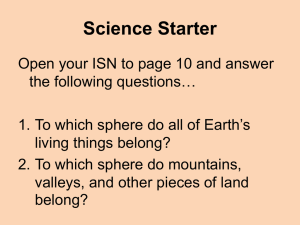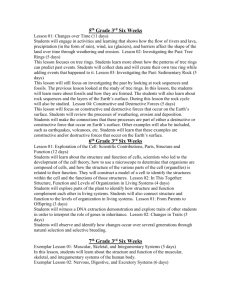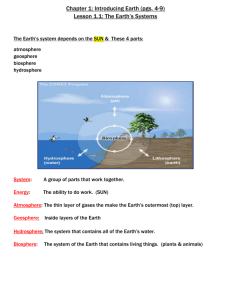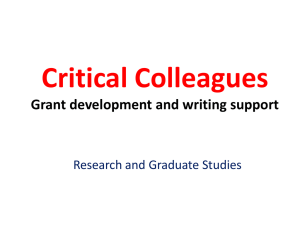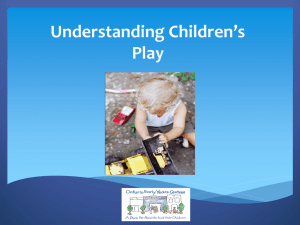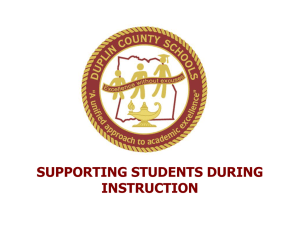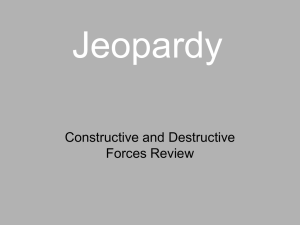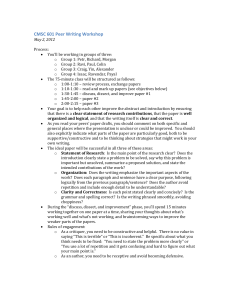Conflict In Project Teams - Stevens Institute of Technology
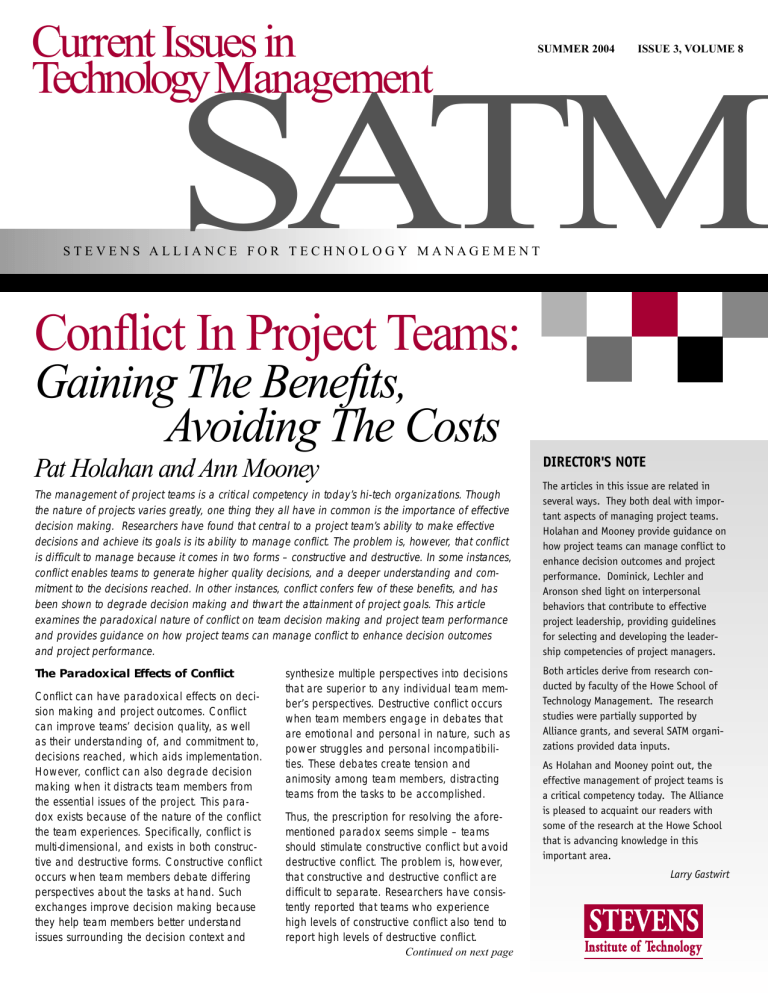
SUMMER 2004 ISSUE 3, VOLUME 8
Current Issues in
Technology Management
SATM
S T E V E N S A L L I A N C E F O R T E C H N O L O G Y M A N A G E M E N T
Conflict In Project Teams:
Gaining The Benefits,
Avoiding The Costs
Pat Holahan and Ann Mooney
The management of project teams is a critical competency in today’s hi-tech organizations. Though the nature of projects varies greatly, one thing they all have in common is the importance of effective decision making. Researchers have found that central to a project team’s ability to make effective decisions and achieve its goals is its ability to manage conflict. The problem is, however, that conflict is difficult to manage because it comes in two forms – constructive and destructive. In some instances, conflict enables teams to generate higher quality decisions, and a deeper understanding and commitment to the decisions reached. In other instances, conflict confers few of these benefits, and has been shown to degrade decision making and thwart the attainment of project goals. This article examines the paradoxical nature of conflict on team decision making and project team performance and provides guidance on how project teams can manage conflict to enhance decision outcomes and project performance.
The Paradoxical Effects of Conflict
Conflict can have paradoxical effects on decision making and project outcomes. Conflict can improve teams’ decision quality, as well as their understanding of, and commitment to, decisions reached, which aids implementation.
However, conflict can also degrade decision making when it distracts team members from the essential issues of the project. This paradox exists because of the nature of the conflict the team experiences. Specifically, conflict is multi-dimensional, and exists in both constructive and destructive forms. Constructive conflict occurs when team members debate differing perspectives about the tasks at hand. Such exchanges improve decision making because they help team members better understand issues surrounding the decision context and synthesize multiple perspectives into decisions that are superior to any individual team member’s perspectives. Destructive conflict occurs when team members engage in debates that are emotional and personal in nature, such as power struggles and personal incompatibilities. These debates create tension and animosity among team members, distracting teams from the tasks to be accomplished.
Thus, the prescription for resolving the aforementioned paradox seems simple – teams should stimulate constructive conflict but avoid destructive conflict. The problem is, however, that constructive and destructive conflict are difficult to separate. Researchers have consistently reported that teams who experience high levels of constructive conflict also tend to report high levels of destructive conflict.
Continued on next page
DIRECTOR'S NOTE
The articles in this issue are related in several ways. They both deal with important aspects of managing project teams.
Holahan and Mooney provide guidance on how project teams can manage conflict to enhance decision outcomes and project performance. Dominick, Lechler and
Aronson shed light on interpersonal behaviors that contribute to effective project leadership, providing guidelines for selecting and developing the leadership competencies of project managers.
Both articles derive from research conducted by faculty of the Howe School of
Technology Management. The research studies were partially supported by
Alliance grants, and several SATM organizations provided data inputs.
As Holahan and Mooney point out, the effective management of project teams is a critical competency today. The Alliance is pleased to acquaint our readers with some of the research at the Howe School that is advancing knowledge in this important area.
Larry Gastwirt
Conflict in Project Teams...
Continued from cover
Despite years of research in conflict, we know surprisingly very little about why constructive and destructive conflict are so closely related, and more importantly, how teams can gain the benefits of constructive conflict while avoiding the costs of destructive conflict.
In the discussion that follows, we provide a summary of our results from two years of research that we conducted to address this need for more guidance in conflict management. We start by providing insight into team and project attributes that promote constructive conflict. Next, we explore why constructive and destructive conflict are so tightly connected. Finally, we identify prescriptions for how teams can experience constructive conflict without the detrimental effects of destructive conflict.
Promoting Constructive Conflict
In an effort to understand how teams can stimulate constructive conflict, researchers have sought to identify team and project attributes related to conflict. Team attributes refer to the characteristics of the team and its members (e.g., diversity). Project attributes refer to the nature of the work or project to which a team is assigned. Below we discuss several team and project attributes related to conflict in project teams.
Team Attributes That Promote Constructive
Conflict.
When exploring what affects the amount of constructive conflict experienced by the team, the nature of the team itself plays an important role. Project teams differ across many attributes (e.g. size, composition, etc.) and these differences affect the kind and degree of diversity embodied in the project team. Constructive conflict has largely been found related to the extent to which a team embodies a diversity of perspectives, knowledge, skills and abilities.
Our research reveals three factors, related to diversity, that encourage constructive conflict:
• Team Size: Much has been written about the problems associated with large teams, such as the difficulty and costs of coordination. While we do not dispute these problems, our research suggests one possible benefit of larger teams -- they tend to experience more constructive conflict. Of course, this doesn’t mean that project teams should expand in size merely to spark constructive debate. Rather, our findings suggest that project teams should ensure they have sufficient membership to handle the scope and complexity of the tasks to which they are assigned.
• Functional Diversity: Cross-functional teams are created to encourage input from various areas of the organization.
We found cross-functional membership to increase the cognitive diversity of the team. This resulted in team members developing and exchanging diverse opinions about how to accomplish tasks.
In other words, functional diversity is another factor that helps teams experience constructive debate.
• Team Tenure Diversity: The third team attribute that we found related to constructive conflict is the degree of a team’s tenure diversity. When projects are longer in duration, team members rotate on and off the project, resulting in a team with members that have worked on the project for varying lengths of time. We found that high tenure diversity promotes constructive conflict. It seems that newer members bring a freshness in perspective and experience from other projects, which differ from but complement perspectives of incumbent team members.
Project Attributes That Promote Constructive
Conflict.
One way of viewing decision making in project teams is as an information processing activity. During decision making, information is exchanged, processed, and acted upon. In this context, conflict (dissent) provides information. As the decision context increases in terms of uncertainty and complexity, so too does the requisite amount and variety of information needed for decision making. Thus, the attributes of the team’s project or task represent another group of determinants likely to impact the amount of conflict the team experiences. In our research, we found strong support for two project factors in promoting constructive conflict:
• Goal Uncertainty: Clear goals can direct the attention, effort, and persistence of team members. Although teams
2 benefit from clear goals, our research suggests that some degree of uncertainty with regard to goals might be good for teams because it gives teams an opportunity to evaluate the project more strategically and debate different ideas about its overall direction. In other words, goal uncertainty is likely to spark constructive debate among team members.
• Project-Based Rewards:
Organizations vary to the extent that their performance management systems explicitly recognize the performance of teams (versus only recognizing individual contributions). We found that when project members’ rewards (e.g., raises, bonuses, advancement) were linked to project performance, teams were more likely to experience constructive conflict.
That is, team members were more inclined to evaluate team decisions by critically questioning team members’ perspectives and offering alternative courses of action to the decisions at hand.
The Mutation from Constructive to
Destructive Conflict
Past research has shown that teams reporting high levels of constructive conflict also report high levels of destructive conflict.
Unlike constructive conflict, destructive conflict is emotionally-oriented and focused on disagreements separate from the task at hand, like power struggles and personal incompatibilities. Destructive conflict draws the team away from the decision at hand, leading to poorer decisions and ultimately poorer performance. In short, the gains teams made by stimulating constructive conflict can be altogether lost by the detriments of destructive conflict.
We explored this phenomenon to better understand why constructive and destructive conflict tend to co-occur. Specifically, we found strong support for a mutation effect.
In fact, in most cases we found constructive conflict (debate) facilitated by factors such as those identified above, tended to spark destructive conflict.
Past research has not looked directly at the mechanisms by which these two sources of conflict are so closely connected. However, several explanations for why destructive con-
flict may indeed "result from" constructive conflict have been proposed. In our research we explored and found support for three explanations.
First, we explored the role of trust in the relation between constructive and destructive conflict. Distrust among team members may lead to misattributions of intent. These misattributions may, in turn, cause constructive conflict to degrade into destructive conflict.
When making decisions, team members interpret the behavior of other team members. They infer intentions, appraise motivabelieve that the diverse opinions and perspectives offered by teammates are motivated by task-related concerns and a desire to improve project performance, making it less likely that destructive conflict will occur.
Second, we explored how contentious communication affects the relation between constructive and destructive conflict. In the process of constructive debate team members may inadvertently use emotionally harsh or contentious communication. Harsh language is likely to be interpreted as disrespect. When team members feel they are
...project teams can realize the benefits of constructive conflict without incurring the costs of destructive conflict if an appropriate basis of intragroup trust is established, contentious styles of communication are kept to a minimum, and the team exhibits a high degree of behavioral integration.
tions, and assess the accuracy of the arguments made. When one person distrusts another, that person may be more prone to attribute the other person’s ideas as having self-serving motives or hidden agendas.
Thus, it has been proposed that when one person distrusts another, that person will tend to interpret ambiguous conflict behavior as sinister in intent and convey distrust through his or her conduct. For example, when team members come from different functional backgrounds, they may not fully trust one another’s expertise, knowledge, or technical language. As a result, they may misconstrue each other’s motives as sinister or as attempts to benefit their own functional areas. Moreover, perceiving that he or she is distrusted, the person whose behavior is interpreted as sinister or self-serving tends to reciprocate that distrust leading to a spiraling effect. Our research supports this contention. We found, when intra-team trust is low, high levels of constructive conflict are associated with high levels of destructive conflict. However, when intra-team trust is high, this relationship is attenuated. Thus, it would appear that when team members trust each other, members are more likely to being treated in a disrespectful manner they may, in turn invoke destructive conflict.
Thus, the hurt feelings that result from poorly expressed constructive conflict may stimulate destructive conflict. Indeed we found that when contentious communication was high, high levels of constructive conflict were associated with high levels of destructive conflict.
However, a high level of constructive conflict was not associated with a high level of destructive conflict when contentious communication was low. Thus, it appears that when an emotionally harsh or contentious style of communication is used to express constructive conflicts, this may inadvertently stimulate destructive conflict.
Finally, the third mechanism we explored to explain the link between constructive and destructive conflict is that of behavioral integration. Behavioral integration is the extent to which the team engages in mutual and collective interaction. Thus, a behaviorally integrated team is one who shares information and resources, and feels collectively accountable for decisions and project outcomes. Or to put it more simply, a "behaviorally integrated" team exhibits a high degree of teamness. Our research supports that the positive relationship between constructive and destructive conflict is attenuated when behavioral integration is high.
Thus, when teams exhibit high levels of behavioral integration, constructive conflict is less likely to spiral into destructive conflict.
These findings are important. First they demonstrate that the strong relationship between constructive and destructive conflict may be severed when conflict is well managed. That is, project teams can realize the benefits of constructive conflict without incurring the costs of destructive conflict if an appropriate basis of intragroup trust is established, contentious styles of communication are kept to a minimum, and the team exhibits a high degree of behavioral integration. Second, these findings offer an important caveat to those who advocate stimulating conflict as a means of decreasing groupthink, increasing creativity, etc. As the conflict research has shown, the stimulation of constructive conflict runs a high risk of unintentionally stimulating destructive conflict, with all its associated negative consequences. However, these negative consequences may be avoided if intrateam trust and behavioral integration are high, and contentious communication is low.
Conflict and Project Performance
In our research, we found that conflict has a powerful, indirect effect on project performance. As in prior research, our research supported that destructive conflict has an adverse impact on decision outcomes and cognitive conflict has a positive impact on decision outcomes (e.g. decision quality, commitment, and consensus). However, we also found evidence that decision outcomes are directly related to team performance.
That is, teams with high levels of destructive conflict made poorer quality decisions and exhibited less commitment to these decisions. And, a lack of commitment to decisions made and poorer quality decisions was found to hinder the team’s ability to stay within schedule and achieve project goals.
Destructive conflict detracts from the team’s ability to capitalize on the collective cognitive capabilities of the team. The hostile
Continued on page 4
3
Conflict in Project Teams...
Continued from page 3
climate that usually accompanies high levels of destructive conflict may indeed make team members less receptive to the ideas of other team members and therefore less able to objectively assess new information provided by other team members, compromising decision quality and commitment. Moreover, the high emotionality associated with destructive conflict distracts members from the task at hand, wasting time and creating inefficiencies in task performance. These findings underscore the importance of teams avoiding destructive conflict.
team member turnover, goal uncertainty, cross-functional diversity, and projectbased rewards – were found to be associated with a high level of constructive conflict. However, whether this conflict will have a beneficial or detrimental effect on team decision making and performance will depend on how conflict is managed (specifically, behavioral integration, the level of intra-team trust, and communication norms).
To manage conflict, teams must learn how to promote constructive conflict without triggering destructive conflict. In conclusion, following are several suggestions for gaining the benefits of constructive conflict while avoiding the costs of destructive conflict.
Conclusions and Prescriptions for
Gaining the Benefits and Avoiding the Costs of Conflict
In brief, our results provide evidence for the following effects.
• Constructive conflict can "mutate" into destructive conflict. Thus, when we stimulate the good kind of conflict, we may also inadvertently stimulate the bad kind of conflict.
• Destructive conflict has negative effects on team decision making and team performance (goal attainment and schedule). Thus, minimizing the incidence of destructive conflict is key.
• Under conditions of high trust, high behavioral integration, and low contentious communication, the likelihood of constructive conflict "mutating" into destructive conflict is less.
• Several variables -- large team size,
Team Composition
• Assemble a functionally diverse project team. Project teams that bring together persons from different disciplines and functional areas have greater constructive diversity. Constructive diversity is a key determinant of constructive conflict as this disparate expertise allows team members to tap a vast store of knowledge and information.
• Allow for gradual, staggered turnover within the team. Project teams, especially those of longer duration, expand and shrink in size as members rotate on and off the team. When confronted with new issues, individuals tend to rely on past issue interpretations, particularly when the results of those experiences led to positive outcomes. When team member turnover is gradual and staggered, newer team members will bring fresh ideas and perspectives based on experiences elsewhere.
Team Interaction
• Promote trust among team members.
Develop and reinforce a high degree of openness and mutuality within the team.
Hidden agendas and off-line deals cannot be part of how the team operates.
• Control contentious communication.
Establish constructive communication norms. Intimidation tactics, blaming, harsh language, or humiliation should not be tolerated. Reinforce respectful communication that conveys a climate of collaboration and mutual support.
• Promote behavioral integration. Identify a collective goal to which the team’s members hold themselves mutually accountable, institute collaborative work methods, and reward the team based on its collective performance.
Team Rewards
• Reward project team members based on the team’s performance as whole.
Team reward systems create a collective goal and a sense of shared fate.
Team rewards promote behavioral integration. ■
About the Authors:
Patricia Holahan (pholahan@stevens.edu) is an Associate Professor of Management at the Howe School of Technology
Management at Stevens Institute of Technology, where she teaches graduate courses in the management of technology, and organizational design and theory. Her research interests focus on managing product development teams and implementing new technology. Her work has been published in several leading academic journals. Pat holds a Ph.D. in organizational behavior from Purdue University.
Ann C. Mooney (amooney@stevens.edu) is an Assistant Professor at the Wesley J. Howe School of Technology Management at Stevens Institute of Technology. Her research interests center on conflict and strategic decision making. Ann received her
Ph.D. in Strategic Management and M.B.A. in Entrepreneurship from the University of Georgia, and is a C.P.A.
4
PROJECT CHARACTERISTICS
AND PROJECT LEADERSHIP:
Understanding Sources of Uncertainty in Project-Based work
Peter Dominick, Thomas Lechler and Zvi Aronson
For much of the twentieth century project management stressed procedural, managerial and operational functions that focus on coordinating and controlling internal and external resources. As a consequence, project managers and teams are typically focused on operational performance by meeting time, budget and technical goals. These activities are essential but in recent years, issues like the rapid rate of technological change and globalization have made today’s business environment more dynamic than ever. At the same time, cross-functional projectbased work has proliferated. As a result, researchers and practitioners alike have increasingly stressed that the nature of project management must change as well.
While efficiency and operational issues remain important, many (such as Aaron
Shenhar here at Stevens) argue that organizations can be more successful when they encourage and empower their project managers to function as, "...strategic
leaders who take total responsibility for project business results."
This shift in role emphasis brings with it the need to more fully understand the skills and behaviors that contribute to meeting the demands of project leadership.
Consider for instance the findings by one member of our research team, Tom
Lechler. In a study of 448 projects he found that traditional planning and controlling activities were less predictive for the success of highly innovative projects.
On the other hand, interpersonal activities like communication were much more important determinants of successful outcomes. These results highlight the fact that while project based work has always required using interpersonal influence to motivate people towards specific objectives, the importance of project managers demonstrating effective project leadership is growing.
In light of this reality, our research has focused on developing a more complete understanding of how best to describe leader effectiveness in the context of projectbased work. Our approach applies one widely accepted model of leadership behaviors, transformational versus transactional leadership, to the project manager’s role. At the same time, due to the complex and dynamic nature of projects, we also focus on identifying and describing key contextual factors and distinct project characteristics that more fully explain the relevance and impact of a project manager’s leadership behaviors. Our objective is to offer a framework that can serve as a basis for future research while also providing practitioners with guidelines for selecting, staffing and developing the leadership competencies of project managers.
Transactional versus
Transformational Leadership
The distinctions between transformational and transactional leadership are found in the component behaviors used to influence others and the effects of the leader on others. In general, transactional leadership behaviors focus on coping with task-related complexities. As a result, transactional leadership helps to establish order and provide consistency in achieving specific goals. Their focus is on process, (e.g. how decisions are made, rather than what decisions are made, as well as explicit and predetermined decision processes).
This approach might also be characterized as problem-solving because issues (transactions) are dealt with as they arise. In terms of project management, transactional leadership behaviors include behaviors like: planning and controlling (e.g., the definition of a detailed cost plan and schedule was provided by the project manager); information and procedural communication (e.g., the project manager clearly communicated to the project members how to make the project manager aware of problems); goal articulation
(e.g., project managers discussed the project goals with the project team).
In contrast, transformational leadership behaviors are about coping with, even inspiring change.
Transformational leaders motivate followers by heightening their awareness of task outcomes, encouraging them to transcend self-interests for the good of the team and activating higher order needs (e.g. needs for esteem, personal fulfillment and achievement).
Transformational leadership also implies a more positive personal connection between leaders and followers. Followers feel trust, admiration, loyalty and respect toward the leader. As a result transformational leaders broaden and elevate follower’s goals, providing them with confidence to go beyond minimally acceptable expectations.
Continued on page 6
5
The model of transformational leadership we have been using was largely developed by
Bernard Bass. It includes four subcategories of behavior. Idealized influence is behavior that arouses strong follower emotions and identification with the leader. Intellectual stimulation is behavior that increases follower awareness of problems and influences them to develop innovative and/or creative approaches to solving them. Individualized consideration includes providing support, encouragement and coaching to followers. Inspirational motivation includes conveying a clear, engaging vision, using symbols to focus attention and modeling appropriate efforts and behavior.
Transformational Leadership
Behaviors and Project Success
It is important to note that transformational and transactional leadership behaviors are not mutually exclusive. Bass argued that transformational leadership builds upon transactional leadership. This is one reason why we believe this model is particularly relevant to project managers. It does not imply that the traditional planning and coordinating tools and behaviors used by project managers are irrelevant. Moreover, many recent thinkers about the distinctions between leadership
(transformational approaches) and management (transactional) approaches stress that in today’s work place people need to use and develop skills relating to both. The point is however, in today’s more dynamic work environment transactional approaches are not always sufficient to ensure project success.
According to Bass, transformational leadership is considered effective across virtually all situations. In fact, numerous studies over the years have demonstrated that transformational leaders provide more favorable motivational effects on group performance in a variety of settings. Moreover, we would expect projects managers who have mastered both transformational and transactional leadership skills to be more effective than those who have not.
Consider for instance, the findings described by our colleagues Holahan and Mooney in their accompanying article on conflict management and project teams. They found higher levels of trust increase the chance that conflicts have a positive rather than negative impact on project outcomes. Trust tends to be an important byproduct of transformational leadership. As other researchers in the field of project management (e.g. Pinto) have observed, "When we consider some of the characteristics of transformational leaders, it is easy to see how they apply to successful project management."
Transformational Leadership in
Relation to Project Characteristics
At the same time however, universal relevance does not mean that transformational leadership is equally effective in all situations, nor does it necessarily mean that all subcategories of transformational leadership are of equal importance across all situations. Therefore, a second key focus for our work has been on identifying key contextual factors (more specifically, characteristics of project-based work and objectives) that might have implications for how and when transformational leadership behaviors are most likely to be relevant. In general, the impact of a project manager’s transformational leadership behavior on project outcomes (performance and success) is moderated by the extent to which the project environment is characterized by uncertainty and the potential for change.
At this point you might be thinking that there are many factors which contribute to uncertainty in work. We would certainly not disagree. In the paragraphs below, however, we will focus on two key characteristics that our research to date suggests are particularly relevant. These are the level of innovation required and the level of urgency associated with completing the project. The findings we’re describing are based upon 120 survey responses from members of 30 different project teams. For each project, we collected different data from different individuals. We asked project team members to describe their perceptions of the project manager’s leadership behavior. We collected data regarding project characteristics from project managers and senior managers with oversight responsibility for the project. Our measures of success are based upon the perceptions of senior managers.
Project Innovativeness – The extent to which a project team’s work would be described as new and non-routine represents one contextual project characteristic that moderates the impact of a project manager’s transformational leadership behavior. For instance, one way to describe the level of innovation inherent in a project is in terms of the technical challenges it poses. At one extreme a project could be characterized as routine. This implies that objectives are met by applying
6 technical solutions that previously existed in essentially the same way that they have been applied before. A more technically challenging project could be described as one in which meeting objectives required project team members to apply existing technology in new or different ways. A project with an even greater level of innovation could be described as one which called for the development of new technology and or knowledge that did not previously exist (see the table below).
Describing level of innovativeness:
How would you describe your projects in relation to these statements?
1. The work required for this project was new to our organization
2. We had never undertaken work like this before.
3. The work required for this project would be considered new ground for our industry.
4. The technical challenges posed by this project would be considered routine.
5. They could be met by applying technical solutions that previously existed within our organization in essentially the same way they had been applied before.
6. The technical challenges posed by this project required us to apply existing technology in new or different ways.
7. The technical challenges posed by this project required us to develop new knowledge that was inconsistent (contradictory) with available knowledge.
Our data suggests that as the technical challenges of a project increase all four dimensions of transformational leadership behavior become increasingly important. Two dimensions, however, standout as particularly important. They are intellectual stimulation and individualized consideration. For projects characterized as routine (low innovation) the correlation between perceptions of overall success and intellectual stimulation is .31. The correlation with individualized consideration is .43.
For those projects characterized as non routine (high innovation), the correlations with success jump to .53 and .59 respectively. Let’s consider why. The implications of intellectual stimulation are perhaps more apparent. For instance, by promoting nontraditional thoughts
and/or promoting the application of existing information in new or unusual ways a project leader can encourage project members to meet the challenges posed by innovative work.
What about individualized consideration? It includes behavior that ultimately help others to feel valued and supported as individuals (e.g.
listening to individuals concerns, providing useful development advice, recognizing and responding to individuals needs). Among other things, this kind of support also makes it possible for people to feel comfortable taking risks in the form of proposing nontraditional ideas, or to take on new challenges that stretch their abilities.
Urgency – Another source of uncertainty is the level of urgency associated with a project.
This concept reflects the extent to which the project is operating under significant time constraints and or the extent to which successful completion of the project is likely to have a major impact on overall organizational outcomes. Under these conditions, the galvanizing effects of transformational leadership strongly contribute to successful results.
Our findings suggest that when urgency is low transformational leadership behavior does not play much of a role in relation to project success. However, when urgency is high all four dimensions appear to play a significant role.
Leadership behaviors relating to inspirational motivation seem particularly relevant. For instance, inspirational motivation includes actions like articulating a compelling vision, showing determination to accomplish what one sets out to do, setting high standards, providing continuous encouragement, and directing attention toward essential aspects of the project. Behaviors relating to idealized influence also have an impact. Examples include providing assurance that obstacles will be overcome, and emphasizing the importance of being committed to beliefs and objectives. Such leadership behaviors potentially help project team members in their efforts to meet both temporal and strategic demands that are often inherent in projects with high levels of urgency.
In addition to urgency and level of innovation there are other factors that contribute to uncertainty and change within projects. Our research is also exploring factors like the frequency of goal changes and or changes in project scope, the extent to which required resources are scarce, and even team composition.
Project Managers as Project Leaders
The point is that when it comes to projectbased work it helps to take a strategic point of view. Organizations can benefit from systematically considering the sources of and types of uncertainty their project teams face. Moreover, for any given project, project managers can benefit from carefully considering such issues at the onset of work. This is important because it can help in both developing and applying the kinds of project leadership skills that will make a difference.
Leadership skills can and should be developed, and there is considerable research suggesting that the potential for skill development is particularly relevant to transformational leadership.
Describing Urgency:
How would you describe your projects in relation to these statements?
1. It was important that the results of the project could be used as soon as possible.
2. The implementation of the project was important for achieving the organization’s strategic goals.
3. The implementation of the project was important for the success of the organization.
In addition, an interesting aspect of transformational leadership is that it has a sort of cascading effect. That is to say, if I work for someone who applies transformational leadership behaviors I am more likely to use those same kinds of behaviors myself. Therefore, if projects are an important part of the way your organization gets things done you need to be considering the extent to which your overall environment encourages and supports leadership development. Do we reward our project managers for acting like transformational leaders? Do we give them the kind of authority they’ll need to execute a leadership role?
What sorts of role models and or organizational values help reinforce transformational leadership as a core competency?
Summary
While traditional planning and coordinating activities will always remain essential to project management, organizations have much to gain by helping their project managers to develop as leaders. When it comes to project leadership, an important aspect of leader effectiveness includes understanding the sources of uncertainty and complexity that any given project poses. Our findings suggest that factors like levels of innovation, and urgency may be particularly important. Understanding your projects in relation to these factors can better help you select, develop and prepare your project managers for the leadership challenges they will face. ■
About the Authors:
Peter Dominick (AAITalk@aol.com) is a Senior Lecturer at the Howe
School of Technology Management. His current research focuses on project leadership, leadership development and virtual work environments. He has consulted for numerous organizations on issues pertaining to employee selection, leadership development and team effectiveness. Pete received his
Ph.D. from Stevens Institute of Technology, his M.S. from Columbia University and his B.S. from Cornell.
Thomas G. Lechler (tlechler@stevens.edu) is an associate professor at the
Howe School of Technology Management at the Stevens Institute of
Technology. He received his Ph.D. from the University of Karlsruhe, Germany.
His research focuses on innovation projects and on the early development of new ventures in exploring dynamic interactions between decisions, structures and behaviors as they influence innovation performance.
Zvi Aronson (zaronson@stevens.edu) is a Senior Lecturer at the Howe
School of Technology Management. His current research focuses on team culture, morale, contextual performance and leader personality in the context of projects. Earlier work experiences at Bakara Ltd.,Tel-Aviv, included training and selection. Zvi earned his Ph.D. at Stevens and received his B.A. from
Ben-Gurion University, Israel.
7
SATM
S T E V E N S A L L I A N C E F O R T E C H N O L O G Y M A N A G E M E N T
UPCOMING EVENTS
Roundtable Meeting , July 12
The next Roundtable meeting will be held on Monday, July 12,
2:00 - 5:00 PM, at Lucent Technologies in Whippany, NJ.
Based upon the interest generated in recent meetings, the topic will be
Working Virtually: What does it mean? How does it function?
Mahmoud Daneshmand, technology leader at AT&T Laboratories, will discuss
AT&T's work on the performance of research on a global and virtual basis. The second facilitator will be Robert Elliott, site manager of Infineum Americas, LP.
Bob will discuss the Infineum experience on virtual networks in a service environment and will raise questions about the issue of product development employing virtual laboratories and pilot plants. This meeting will be an informative discussion on what virtual working really means to organizations and individuals, today and in an aspirant sense, and how it is best implemented.
RECENT EVENTS
Roundtable Meeting , April 20
The April Roundtable meeting on Sustaining Innovation While Outsourcing
Technology Development was facilitated by Karen Sobel Lojeski, formerly a principal with Xansa Consulting where she oversaw the Outsourcing and Enterprise
Systems practice. Innovation climate, people, process and product (competitive advantage) were used as the main points around which outsourcing and its impact on innovation were discussed.
A summary of the discussion can be obtained from the Alliance office.
2004 SATM Conference, May 11
The Fifteenth Annual Conference, on May 11 at AT&T Laboratories, dealt with
Retaining and Motivating Key Technical Personnel . The four excellent speakers were all well-received: Joan McManus-Massey, Director of Human Resources at
AT&T Laboratories, Ann Langbein, Director of Human Resources for IBM’s Watson
Laboratories, David Lenzner, former Vice President of Human Resources at Xerox and General Instrument Corporations, and Richard Reilly, Professor in the Howe
School of Technology Management.
The presentations were followed by a spirited panel discussion.
For further information on these and other Alliance activities, contact Dr. Lawrence Gastwirt: 212-794-3637 • lgastwirt@aol.com
INFORMATION
Visit the SATM website: http://howe.stevens.edu/SATM
To download articles from past SATM newsletters, go to http://howe.stevens.edu/SATM/Newsletters
To send comments on this newsletter, or to submit an article for future publication, please e-mail Dr. Jack McGourty at jm723@columbia.edu
SATM- Stevens Alliance for Technology Management
Wesley J. Howe School of Technology Management
Stevens Institute of Technology
1 Castle Point on Hudson, Hoboken, New Jersey 07030
Sharen Glennon 201-216-5381 sglennon@stevens.edu
SATM Director
Dr. Lawrence Gastwirt
Director, Mgmt. Technology
Transfer
Dr. Lemuel Tarshis
Editor
Dr. Jack McGourty
SATM Sponsors
AT&T
ISO
Lucent Technologies
Teknor Apex
Unilever Bestfoods
US Army Research Development and Engineering Center
Stevens Institute of Technology
The Fu Foundation School of
Engineering & Applied
Science, Columbia University
©2004 Stevens Alliance for
Technology Management

